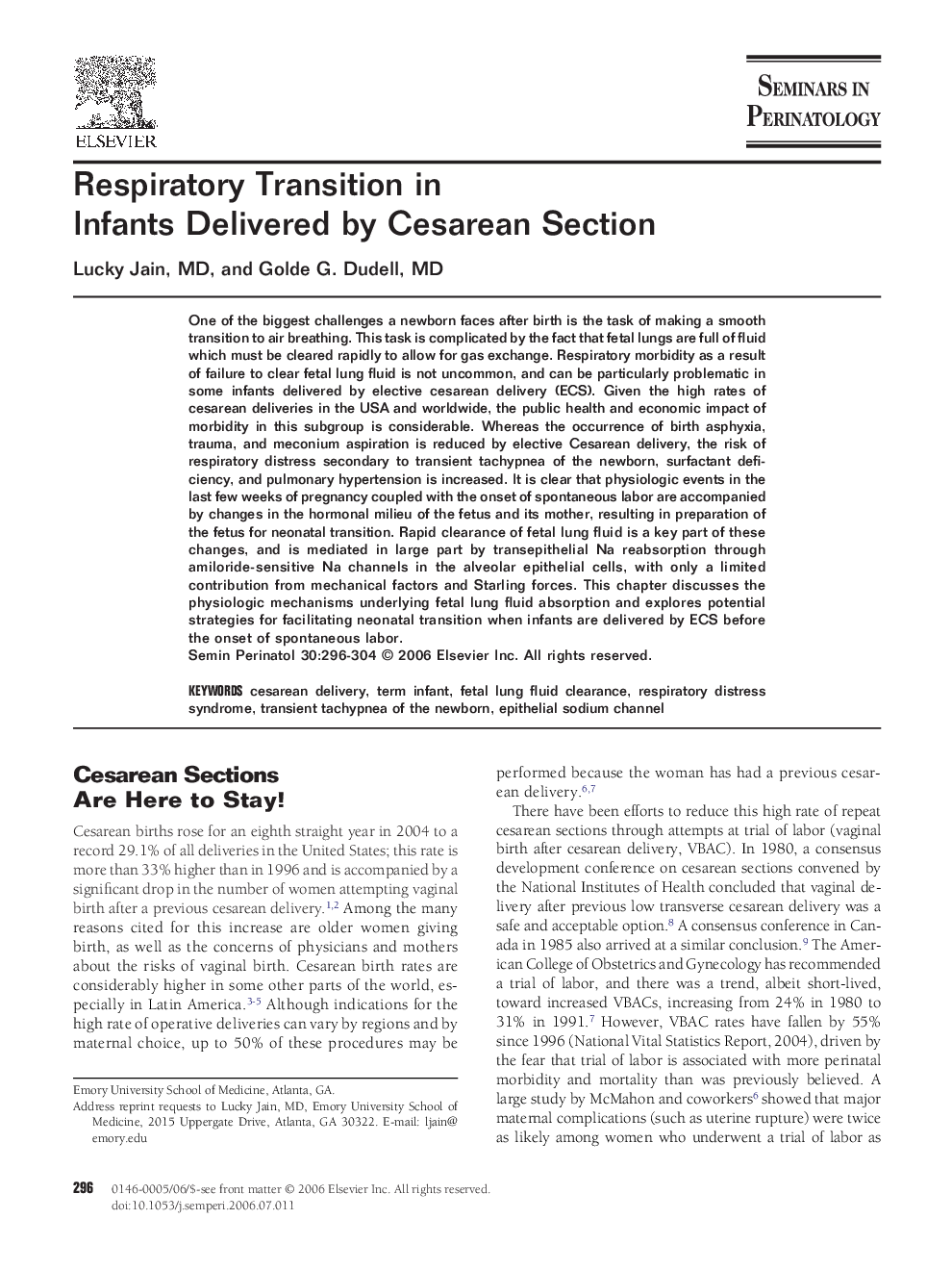| کد مقاله | کد نشریه | سال انتشار | مقاله انگلیسی | نسخه تمام متن |
|---|---|---|---|---|
| 3837038 | 1247582 | 2006 | 9 صفحه PDF | دانلود رایگان |

One of the biggest challenges a newborn faces after birth is the task of making a smooth transition to air breathing. This task is complicated by the fact that fetal lungs are full of fluid which must be cleared rapidly to allow for gas exchange. Respiratory morbidity as a result of failure to clear fetal lung fluid is not uncommon, and can be particularly problematic in some infants delivered by elective cesarean delivery (ECS). Given the high rates of cesarean deliveries in the USA and worldwide, the public health and economic impact of morbidity in this subgroup is considerable. Whereas the occurrence of birth asphyxia, trauma, and meconium aspiration is reduced by elective Cesarean delivery, the risk of respiratory distress secondary to transient tachypnea of the newborn, surfactant deficiency, and pulmonary hypertension is increased. It is clear that physiologic events in the last few weeks of pregnancy coupled with the onset of spontaneous labor are accompanied by changes in the hormonal milieu of the fetus and its mother, resulting in preparation of the fetus for neonatal transition. Rapid clearance of fetal lung fluid is a key part of these changes, and is mediated in large part by transepithelial Na reabsorption through amiloride-sensitive Na channels in the alveolar epithelial cells, with only a limited contribution from mechanical factors and Starling forces. This chapter discusses the physiologic mechanisms underlying fetal lung fluid absorption and explores potential strategies for facilitating neonatal transition when infants are delivered by ECS before the onset of spontaneous labor.
Journal: Seminars in Perinatology - Volume 30, Issue 5, October 2006, Pages 296–304